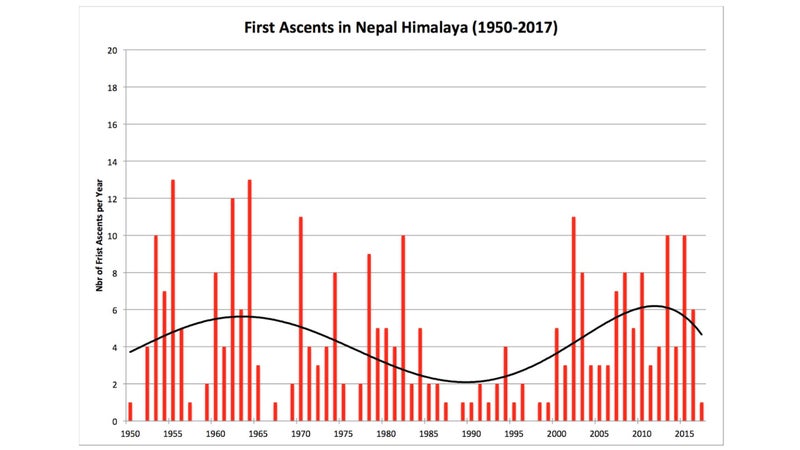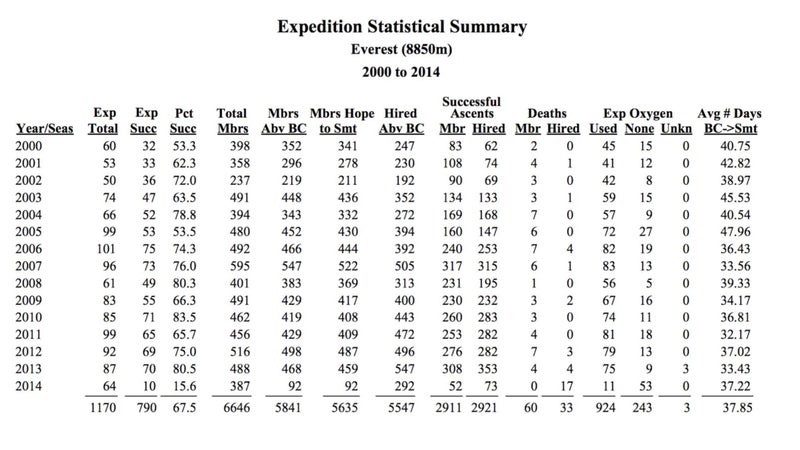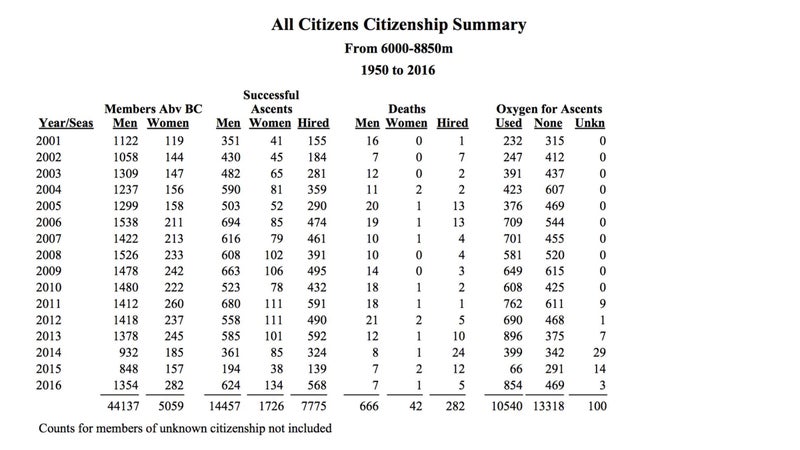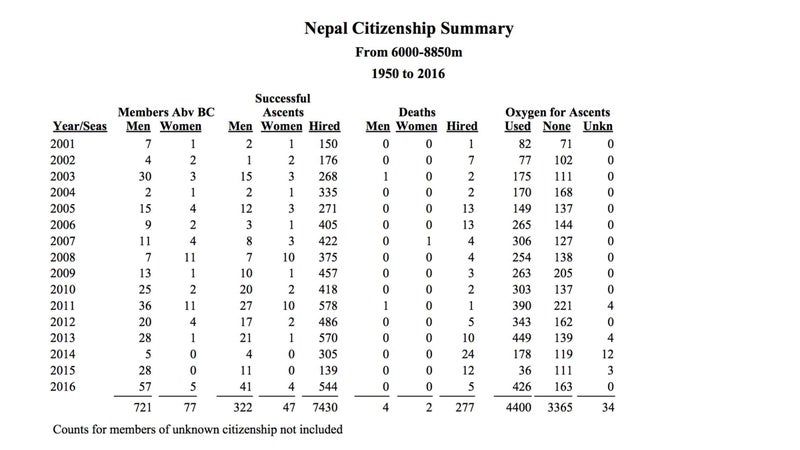The Himalayan Database, which has records of every expedition in Nepal since 1905, is regarded as the statistical bible of mountaineering. It tracks everything from summits to deaths to demographics, and in the past, it was only available for purchase as a $69.95 CD or annual book. But as of last month, for the first time ever, the complete archive is free to download online.
The database can be filtered by expedition, climber, peak, nationality, gender, season, mortality rates, cause of death, and more. It also has the capability to run custom searches and analysis, which I’ve often requested on behalf of Outside. Professionals seeking data about a specific climbing season or just mountaineering nerds in it for the trivia hit can use the archive to answer all sorts of questions. One popular query: Which is safer—the north or south side of Everest? In 2013, the numbers pointed to the south side. Now they’re pretty even, says Richard Salisbury, a former professor specializing in database processing at the University of Michigan who led the charge to digitize the archive. “Everest has just about reached its capacity in what it can support.”
Between 1905 and 2016, a total of 44,137 climbers have climbed above base camp on the 6,000-to-8,000-meter peaks in Nepal. And for those wondering if all that traffic means the age of exploration is over, Salisbury says there are still 130 unclimbed peaks in Nepal, plus a few hundred unlisted, unnamed, and unclimbed peaks in the 5,000-to-6,000-meter range. People often ask Salisbury whether something has been done before or if they’d be the first to do it.

The original database was the brainchild of journalist Elizabeth Hawley, who started archiving expeditions in 1963 when she was on an assignment for Reuters to cover the first U.S. ascent of Mount Everest. Hawley, who at 93 still lives in Kathmandu, liked the work so much that she continued it after the assignment ended. In the early days, there were only 50 to 100 Nepal expeditions per year, so Hawley could record everything simply by showing up at mountaineers’ hotels with a clipboard to interview them. Today, there are more than 400 expeditions annually, and while the team still tries to meet as many in person as possible, they use Survey Monkey to cover the remaining ground.
Salisbury met Hawley in 1991 after he led an expedition on Annapurna 4. “I came with a bunch of information from Annapurna and realized she also had a lot,” he says. “I asked her if she considered putting it on a computer. A year later we went ahead and tried that.”
I asked Salisbury what data he found most interesting. “One of the things I’m interested in isn’t just ascents and deaths, but why people fail,” he says. “We have 14 to 15 categories that we put people into when they don’t succeed.” These factors include bad weather, injuries, fitness, exposure, and frostbite. “Some people are just not capable of what they’re trying to do. I think one of the things I noticed is that for people climbing without oxygen, they get cold first before they hit altitude trouble. And the people that climb with oxygen are more apt to have altitude problems because they run out of oxygen.”
Here’s some data I pulled that I found particularly interesting.
First Ascents

A History of Everest Climbs

A History of Nuptse Climbs

The Demographics of the Climbers

The Nepali Climbers


